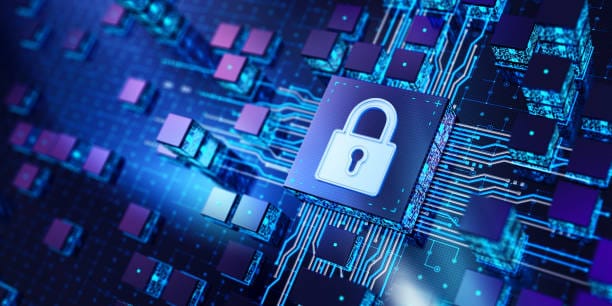The modern small business operates in a realm unimaginable to its predecessors. The corner café that once relied on handwritten ledgers now processes payments through cloud-connected tablets. The independent retailer who once kept sales records in a filing cabinet now uses online platforms to track inventory and customer preferences. Even the smallest consulting firm stores client contracts and sensitive communications in email accounts and shared drives.
This digital transformation has unlocked astonishing opportunities. A small business can now compete for customers across the globe, collaborate with suppliers in real time, and market with the same precision as Fortune 500 companies. But this new landscape comes with an invisible, ever-changing shadow: cyber threats.
Cybersecurity is no longer an abstract concern reserved for governments and tech giants. It is a daily reality for the smallest bakery, the newest design studio, the local repair shop. The very same technology that enables growth also opens doors — and sometimes, those doors are left ajar for the wrong people.
The Myth of Smallness as Protection
Many small business owners harbor a dangerous assumption: “We’re too small to be a target.” It feels intuitive — why would sophisticated hackers waste time on a company with a handful of employees and modest revenue?
In truth, the opposite is often the case. Cybercriminals prize small businesses precisely because they tend to have weaker defenses. Automated tools can scan millions of systems across the internet in minutes, looking for unpatched software, weak passwords, and misconfigured security settings. Attackers do not need to target a specific company; they simply wait for a vulnerability to present itself.
For a cybercriminal, a small business can be an easy payday. Stolen customer data can be sold on the dark web. Compromised systems can be held for ransom. Bank accounts can be drained through fraudulent transfers. The cost to the attacker is minimal — a few lines of malicious code, a crafted phishing email — but the cost to the victim can be devastating.
The Nature of Modern Cyber Threats
To understand cybersecurity for small businesses, one must first understand the evolving nature of threats. The popular image of a hacker — a lone figure in a dark hoodie, typing furiously in a dimly lit room — is only a partial truth. Modern cybercrime is a diverse ecosystem.
Some attacks are orchestrated by large, well-funded groups that function almost like legitimate businesses, complete with customer service for victims willing to pay ransoms. Others are carried out by opportunists using prepackaged attack kits available for purchase on underground forums. There are also state-sponsored actors whose goals may be political or strategic rather than purely financial.
The tactics themselves range from the crude to the sophisticated. A phishing email might be riddled with grammatical errors, hoping to catch a distracted employee off guard. Conversely, a business email compromise attack might involve weeks of surveillance, carefully mimicking legitimate correspondence until the attacker can insert fraudulent payment instructions.
The Human Factor at the Core
Technology is only one side of the cybersecurity equation. At the heart of many breaches is human behavior. A single click on a malicious link can compromise an entire network. A shared password written on a sticky note can give an intruder full access to business systems.
For small businesses, where employees often wear multiple hats and cybersecurity is not a dedicated role, the risk of human error is amplified. An office manager might handle bookkeeping, customer service, and social media — all while managing a flood of emails, any one of which could be a trap.
This is not about blaming employees but about recognizing the environment in which they operate. Without proper training, even the most diligent staff member is vulnerable to deception. And without clear policies, employees may unintentionally create openings that attackers can exploit.
Data: The Lifeblood of the Business
In the digital age, data is the currency of trust. Customer contact information, payment details, transaction histories, proprietary designs, employee records — all are vital to operations and all are valuable to someone outside the company.
Losing data can be catastrophic. The immediate financial cost may include lost sales, legal fees, and regulatory fines. The longer-term cost is harder to measure but often more damaging: the erosion of customer trust. Once customers believe their information is not safe with a business, they may not return. In competitive markets, trust is not easily rebuilt.
The Legal and Regulatory Landscape
Cybersecurity is not just a matter of protecting one’s own interests. Increasingly, it is a legal obligation. Governments around the world have enacted regulations governing how businesses handle personal data. The European Union’s General Data Protection Regulation (GDPR) imposes strict requirements on data protection, with significant fines for noncompliance — even for companies outside Europe if they serve EU customers.
In the United States, regulations vary by state and industry. California’s Consumer Privacy Act (CCPA) sets high standards for data transparency and control. Industries such as healthcare and finance operate under additional federal rules, such as HIPAA and the Gramm–Leach–Bliley Act.
For small businesses, these rules can feel daunting, but they underscore a central truth: cybersecurity is not optional. It is a legal, ethical, and reputational imperative.
Building a Culture of Security
Cybersecurity for small businesses is not solely about installing antivirus software or hiring an IT consultant once a year. It is about creating a culture where security is woven into daily operations. This culture begins with leadership.
When business owners take cybersecurity seriously — discussing it openly, allocating resources for it, and modeling good practices — employees are more likely to follow suit. Security becomes part of the company’s identity, much like customer service or product quality.
Creating this culture involves regular training, clear policies, and a shared understanding that cybersecurity is everyone’s responsibility. It means celebrating successes — such as an employee spotting and reporting a phishing attempt — as much as meeting sales goals.
Technology as a Shield and a Tool
The technical measures available to small businesses today are more powerful and affordable than ever. Cloud-based services often include robust security features by default, from encryption to multi-factor authentication. Firewalls and endpoint protection tools can be managed through simple dashboards, even by non-experts.
Backups are no longer confined to external hard drives that sit in the same office as the primary systems. Secure, offsite, automated backups can protect against data loss from cyberattacks, hardware failure, or natural disasters.
But technology alone is not a silver bullet. Tools must be configured correctly, kept up to date, and used consistently. A locked door is useless if the key is left under the mat.
The Role of Incident Response
Even the most secure small business must accept a hard reality: breaches can still happen. What separates a survivable incident from a catastrophe is preparation.
An incident response plan is the playbook for what to do when something goes wrong. It outlines who to contact, how to contain the threat, and how to communicate with customers, regulators, and the public. Without such a plan, a business may lose precious hours to confusion and hesitation — time during which damage can escalate.
Practicing the plan is as important as writing it. Just as fire drills prepare people to evacuate safely, simulated cyber incidents prepare teams to act decisively under pressure.
The Emotional Toll and Resilience
Cyberattacks are not just technical events; they are deeply personal for the people involved. For a small business owner, discovering that systems are locked by ransomware or that customer data has been stolen can feel like a betrayal. There is often guilt — “I should have done more” — and fear about the future of the business.
Acknowledging this emotional dimension is important. Resilience in cybersecurity is not only about recovering systems but also about restoring confidence — in the team, in the business, and in the trust of customers.
Some of the most inspiring stories in the small business world are those of owners who faced a devastating cyber incident and emerged stronger, using the experience as a catalyst to improve security and strengthen relationships with clients.
Looking Ahead: The Evolving Battlefield
Cybersecurity will never be static. New technologies bring new vulnerabilities, and attackers are endlessly creative. Artificial intelligence can be used to detect threats more quickly — but it can also be used to craft more convincing scams. The Internet of Things connects everything from thermostats to security cameras, but each connected device can be a potential entry point for attackers.
For small businesses, the future demands vigilance. It requires staying informed about emerging threats, updating systems regularly, and being willing to adapt. Cybersecurity is not a one-time project; it is a continuous process, much like marketing, customer service, or product development.
Conclusion: The Commitment to Protect
The essence of small business has always been about relationships — with customers, with employees, with communities. In the digital era, protecting those relationships means protecting the data and systems that sustain them.
Cybersecurity is not the enemy of convenience or innovation; it is their guardian. It allows small businesses to explore new markets, adopt new technologies, and compete with confidence. It is the quiet promise behind every online order, every digital invoice, every stored customer record: “Your trust is safe with us.”
The path to strong cybersecurity does not begin with fear but with commitment. Commitment to learning, to investing in safeguards, to fostering a culture where everyone plays a part. The threats may be invisible, but the choice to defend against them is a visible mark of a business that values its people, its mission, and its future.






